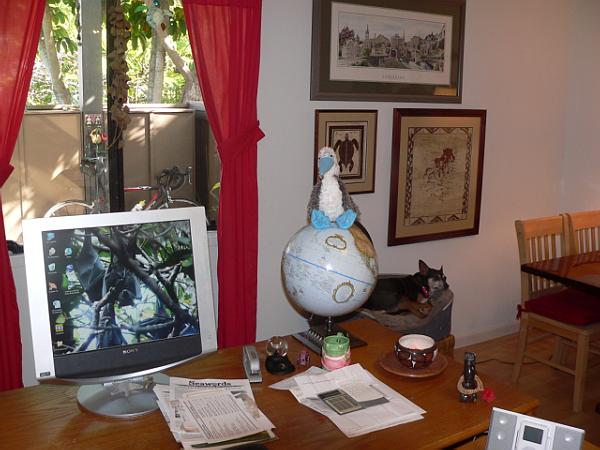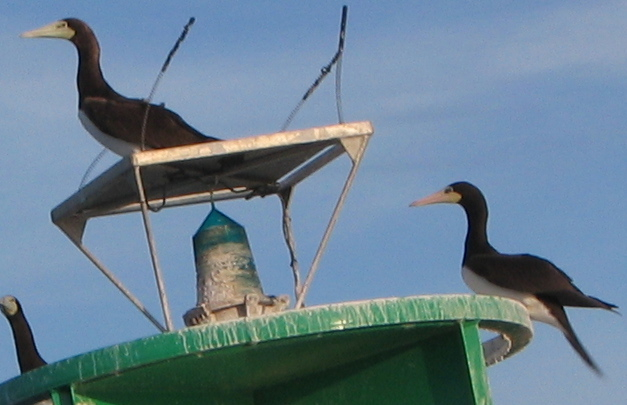Published in the Ocean Watch column, Honolulu Star-Advertiser © Susan Scott
November 2, 2007
About 20 years ago, before I knew anything about seabirds, I toured the Galapagos Islands on a live-aboard boat called Sulidae. The name meant nothing to me at the time, but by the end of the trip, I loved both the name and the birds it refers to. My infatuation with booby birds, family Sulidae, had begun.
The fascination continues. This week, while sailing down Australia’s east coast, I watched, enthralled, as flock after flock of brown boobies flew past in formation, each bird making a few wing flaps followed by a long glide. I didn’t know boobies did this, but there they were, going who-knows-where in a long V like a bunch of geese.
Behind the flocks a few stragglers fished, providing further cockpit entertainment. When these torpedo-shaped birds spot a fish, they tuck and dive from as high as 60 feet above the water. Since their bills slice the water at a slight angle, the birds make surprisingly small splashes. Still, the impact of such high dives on those small bodies is large.
Several adaptations help. Air sacs under the skin cushion the crashes. Also, water can’t shoot up the birds’ external nasal passages because they don’t have any. Booby birds breathe through their mouths.
If the booby misses its fish at first plunge, it can swim toward its prey by flapping half-folded wings, and often still make its catch.
All boobies are fond of flying fish, which can’t beg a break. When being pursued underwater, these fish make valiant escape efforts by leaping into the air, where they are then picked off by cruising seabirds.
The fishes’ above-water odds are better at night, but it’s still not entirely safe. Red-footed boobies have extraordinary eyesight and hunt both day and night.
Six species of booby birds grace the world’s tropical oceans. Australia and Hawaii share the same three species: brown, red-footed and masked. Two other species exist in Central and South America: Peruvian and blue-footed boobies.
I’ve been lucky enough to know these five, but I’ve not seen the sixth, Abbott’s booby, nor will many others. This species lives only on and around the Indian Ocean’s isolated Christmas Island, which belongs to Australia. Due to this bird’s slow reproduction rate and habitat destruction on the island (mining), Abbott’s booby is now an endangered species.
Booby birds nest on remote islands and have no land predators, and therefore aren’t afraid of humans. This tameness led to easy capture by 18th-century sailors who gave them the name of booby bird because they thought them stupid. The word comes from “bobo,” which means dunce in Spanish.
These birds aren’t stupid but they can sure be goofy. Blue-footed boobies show each other their feet, one at a time, while courting. The birds stand on one leg while holding up the other brilliant blue foot to attract a prospective mate.
Red-footed boobies stand in trees, their webbed red feet wrapped precariously around thin branches. The birds often look like they’re going to topple head first from their perch, but of course, it never happens.
When Sulidae introduced me to the Galapagos Islands all those years ago, it began my love affair with booby birds. Today on my own boat the journey continues.
 Susan’s avian and canine inspritations.
Susan’s avian and canine inspritations.
 Brown Boobies on a bouy in Hawaii. Courtesy of Scott.
Brown Boobies on a bouy in Hawaii. Courtesy of Scott.